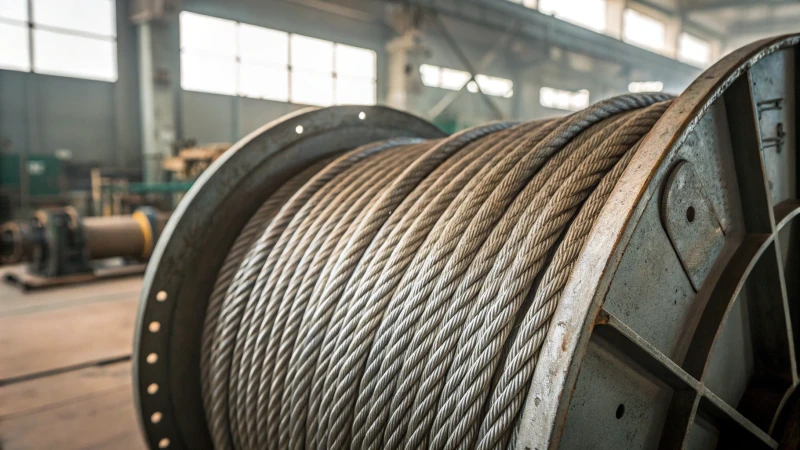
Picture this: a world where safety is compromised by a simple mistake in choosing a steel wire rope. Let's dive into why quality standards matter.
Quality standards for heavy-duty steel wire ropes, like ISO 2414 and DIN 3054, ensure that these ropes can withstand intense stress and wear, making them indispensable for industrial safety.
I remember the first time I had to choose a steel wire rope for a project. The stakes were high; the safety of my team depended on it. It was then that I truly understood the weight of these standards. ISO 2414 and DIN 3054 aren't just numbers—they're lifelines in the world of construction and heavy machinery. These standards serve as a beacon of reliability, guiding us through the complex landscape of material selection and operational efficiency. They help us strike the perfect balance between cost management and safety assurance across various industries. Knowing these ropes meet rigorous criteria gives me peace of mind, knowing every lift and pull is backed by meticulous testing and quality control.
ISO 2414 is a standard for steel wire rope quality.True
ISO 2414 specifies technical requirements for steel wire ropes.
DIN 3054 applies to all types of industrial ropes.False
DIN 3054 specifically targets heavy-duty steel wire ropes.
How Do ISO 2414 and DIN 3054 Standards Impact Steel Wire Ropes?
You know that feeling when you're rigging up equipment and need everything to be just right? Steel wire ropes are at the heart of it, and understanding standards like ISO 2414 and DIN 3054 can really make a difference.
ISO 2414 and DIN 3054 standards ensure that steel wire ropes are built with the necessary strength, durability, and resilience, crucial for safe and reliable industrial use. These standards help mitigate risks by setting benchmarks for tensile strength and mechanical stress resistance.
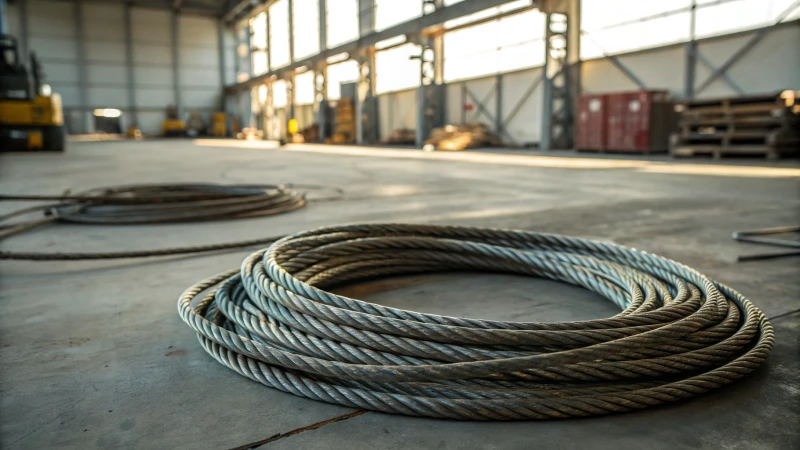
Understanding ISO 2414 Standards
Have you ever been in a situation where you had to choose the right wire rope for a project, and it seemed like there were a million factors to consider? ISO 2414 standards are like a trusty guidebook, focusing on essential specs such as load-bearing capacity and tensile strength. They're especially vital for industries like mining1 and construction, where ropes must endure high stress and fatigue.
I remember when I was managing a mining project, the ropes we used had to comply with these standards to prevent any downtime from rope failure. It's all about understanding rope elongation and breaking force to ensure the rope matches the load requirements.
Key Specifications of ISO 2414:
| Specification | Description |
|---|---|
| Load-bearing capacity | Defines the maximum load the rope can handle. |
| Tensile strength | Measures resistance to breaking under tension. |
| Elongation | Assesses rope stretch under stress conditions. |
| Breaking force | Minimum force required to break the rope. |
Impact of DIN 3054 on Wire Rope Design
DIN 3054 feels like that reliable friend who always checks your work. It emphasizes material quality and construction methods, ensuring that every steel wire rope is crafted with precision. When I was sourcing ropes for crane operations2, adhering to these standards meant I could trust the ropes to perform flawlessly under heavy-duty demands.
Considerations in DIN 3054:
- Material Quality: Ensures that steel is resistant to corrosion and wear.
- Construction Method: Guides wire rope braiding for uniformity and strength.
- Testing Procedures: Sets out tests for compliance with load and durability specs.
Application in Various Industries
These standards are like a lifeline across multiple sectors. In the automotive industry, for instance, they assure that robotic arms can handle repeated stress without a hitch. In the construction industry3, they are crucial in minimizing accidents during lifting operations.
Challenges and Compliance
Adhering to these standards can be tricky, often requiring specialized equipment to test tensile strength accurately. I recall a time when our manufacturing team invested significantly in quality control processes to ensure our steel wire ropes met these rigorous standards. It wasn't just about compliance; it was about building trust with stakeholders through safety, efficiency, and cost-effectiveness.
By sticking to ISO 2414 and DIN 3054, we not only enhanced product reliability but also solidified our standing in global markets. It's like giving procurement managers such as John4 or Emma5 in mining peace of mind when making critical purchasing decisions.
ISO 2414 ensures steel wire ropes can handle high stress.True
ISO 2414 focuses on load-bearing and tensile strength, ensuring ropes handle stress.
DIN 3054 standards neglect material quality in wire ropes.False
DIN 3054 specifies steel quality, ensuring corrosion resistance and durability.
Why is Load-Bearing Capacity Critical in Steel Wire Rope Selection?
Picking the right steel wire rope isn't just a technical decision—it's a crucial safety measure. Every time I select one, I feel the weight of ensuring both efficiency and safety in our operations.
Load-bearing capacity is essential because it defines the maximum weight a steel wire rope can safely support, directly impacting safety and operational efficiency by preventing accidents and equipment failures.
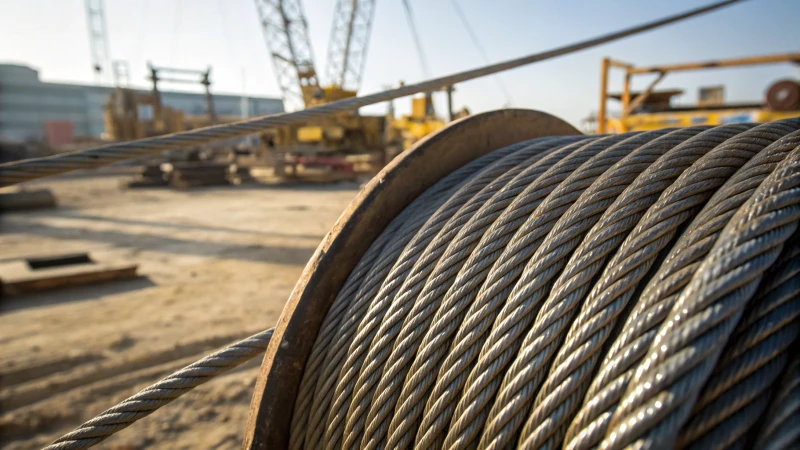
Understanding Load-Bearing Capacity
I remember the first time I had to choose a steel wire rope for a major project. The stress was palpable—I knew that selecting the wrong capacity could mean disastrous delays or worse, safety hazards. Load-bearing capacity is essentially the weight a wire rope can handle without failing. It's a crucial factor across various industries6, like construction and mining, where heavy lifting is everyday business.
Factors Affecting Load-Bearing Capacity
In my experience, several aspects determine how much load a wire rope can bear:
- Material Strength: The tensile strength of the steel is non-negotiable—it’s about knowing your ropes won't snap under pressure.
- Diameter: I learned early on that sometimes bigger really is better; larger diameters usually mean greater capacity.
- Construction: How the strands are arranged can be the difference between a rope that lasts and one that doesn’t.
| Factor | Description |
|---|---|
| Material Strength | Determines durability and load tolerance. |
| Diameter | Larger diameters offer higher capacities. |
| Construction | Affects load distribution across strands. |
International Standards and Compliance
Sticking to standards like ISO 2414 has been my compass in this sea of technical specs. These guidelines ensure that the ropes meet all the necessary safety criteria7, helping me sleep easier at night knowing that mishaps are less likely in high-risk environments.
Practical Applications and Examples
In construction, I've often seen procurement managers like John needing ropes that can handle dynamic loads effortlessly. For example, when a crane lifts massive steel beams, only a rope with a high load-bearing capacity will do to prevent sudden breaks during operation.
In mining, colleagues like Emma rely on ropes that can withstand both static and dynamic stresses. The right choice here minimizes downtime and boosts operational efficiency—a lesson I've taken to heart.
Safety Considerations
Choosing a rope based on its load-bearing capacity is more than just functionality—it's about safeguarding lives and equipment. Overloading can lead to catastrophic failures, which is why safety protocols8 are paramount. My decisions always factor in whether each rope used meets or exceeds expected loads.
Understanding these elements helps me make informed choices that balance cost, efficiency, and safety effectively. And honestly, nothing beats the peace of mind that comes with knowing everything's securely in place.
Steel wire rope diameter affects load capacity.True
Larger diameters generally increase the load-bearing capacity of steel wire ropes.
Ignoring standards like ISO 2414 is safe.False
Ignoring standards can lead to safety risks as they ensure ropes meet required load limits.
What Are the Key Safety Features in Heavy-Duty Steel Wire Ropes?
Ever wondered what keeps those massive machines safe and sound with steel wire ropes? Let's dive into the essential safety features that make these ropes reliable workhorses in demanding industries.
Heavy-duty steel wire ropes boast key safety features like corrosion resistance, flexibility, and high tensile strength. They adhere to international safety standards, including ISO 2414 and DIN 3054, ensuring they are fit for heavy-duty applications across various industries.
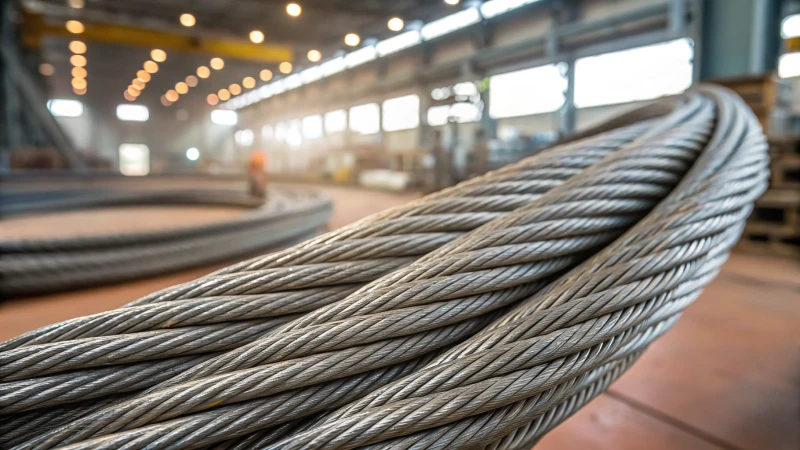
Corrosion Resistance
Let me take you back to a time when I was working on a project in a coastal area. The salty air was relentless, and I quickly learned the hard way that not all materials can withstand such harsh conditions. That's where corrosion-resistant steel wire ropes come in. They're often galvanized or made from stainless steel ropes9 to fend off rust, ensuring they stay strong and reliable over time.
Flexibility and Bendability
Flexibility might seem like a simple feature, but imagine needing a wire rope to bend and twist around a crane's pulleys without snapping. I've seen firsthand how crucial this is, especially during projects involving constant movement, like elevators or cranes. Flexible ropes endure less fatigue and last longer.
High Tensile Strength
Picture this: you're lifting a massive load, and the thought of the rope snapping is enough to send chills down your spine. That's why high tensile strength is non-negotiable. These ropes are crafted to handle substantial stress without stretching or breaking, making them indispensable for heavy lifting.
Compliance with Safety Standards
In my line of work, nothing beats the peace of mind that comes from knowing your equipment meets top-notch standards. ISO 2414 and DIN 3054 certifications assure us that these ropes can perform reliably under specified conditions. Always double-check these certifications when choosing your ropes.
Table of Safety Features
| Feature | Importance |
|---|---|
| Corrosion Resistance | Prevents weakening over time |
| Flexibility | Reduces risk of breakage |
| Tensile Strength | Supports heavy load-bearing |
| Safety Compliance | Ensures reliability under stress |
Additional Considerations
Beyond these vital features, don't overlook abrasion resistance and impact toughness. These aspects can make a significant difference in a rope's safety profile. I always recommend partnering with suppliers who provide thorough specifications and ongoing support to ensure safety standards are consistently met.
Heavy-duty steel wire ropes are foundational to numerous industrial tasks, demanding meticulous attention to their safety features and adherence to global standards for peak performance.
Galvanized ropes resist corrosion better than stainless steel.False
Stainless steel provides superior corrosion resistance compared to galvanized.
ISO 2414 ensures safety in heavy-duty wire ropes.True
ISO 2414 is a standard for quality and safety in wire ropes.
How Does the Environment Affect Steel Wire Rope Durability?
Have you ever wondered why some steel wire ropes seem to last forever, while others fall apart in no time? Let's explore how the environment plays a crucial role.
Environmental factors like humidity, temperature, and chemical exposure significantly affect the durability of steel wire ropes. Choosing the right materials and maintaining them properly can greatly enhance their lifespan, even in tough conditions.
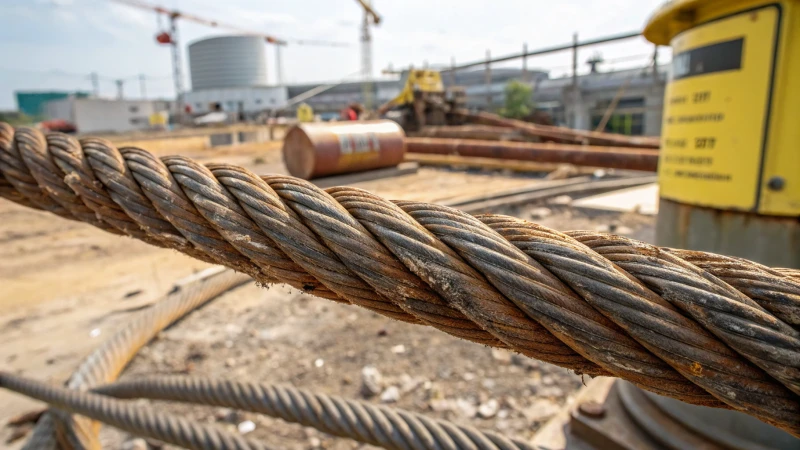
Impact of Humidity on Steel Wire Ropes
Once upon a time, I was working on a project that required steel wire ropes10 to be installed outdoors in a particularly humid region. To my dismay, I noticed that some ropes were rusting faster than others. It turned out that the ungalvanized ropes were more vulnerable to the relentless attack of moisture. Lesson learned—opting for galvanized or stainless steel ropes and ensuring they were regularly lubricated made a world of difference.
| Rope Type | Corrosion Resistance |
|---|---|
| Galvanized Steel | High |
| Stainless Steel | Very High |
| Ungalvanized Steel | Low |
Temperature Variations
During another project in a location with extreme temperature swings, I learned firsthand how important it is to choose the right steel wire rope11. Cold temperatures made some of the ropes brittle, leading to unexpected breakages. On the other hand, high temperatures reduced the load-bearing capacity of others. After some trial and error, selecting ropes with thermal treatments specifically designed for the environment was key to avoiding these issues.
Chemical Exposure Effects
In industrial environments where chemicals are as common as coffee breaks, I realized that steel wire ropes were being degraded at an alarming rate. Acids caused pitting, and alkalis led to embrittlement. Protective coatings became our best friends, and regular cleaning routines helped keep the ropes in prime condition.
- Common Chemicals and Their Impact:
- Acids: Cause pitting and surface erosion.
- Alkalis: Lead to embrittlement.
Practical Solutions for Durability
From my experience, ensuring the longevity of steel wire ropes isn’t just about choosing the right product; it’s also about proper care. Regular inspections are crucial to catch wear before it becomes a hazard. Applying anti-corrosion lubricants and using covers to protect the ropes from direct exposure can extend their life significantly.
- Maintenance Tips:
- Regularly inspect for signs of wear.
- Apply anti-corrosion lubricants.
- Use covers to shield from direct environmental exposure.
In summary, understanding how environmental factors impact steel wire ropes is not just theory—it's something I've lived through. Selecting the right materials and following solid maintenance protocols can make all the difference in durability.
High humidity accelerates rust in ungalvanized steel ropes.True
Ungalvanized steel ropes lack protective coatings, making them prone to rust.
Cold temperatures increase steel wire rope flexibility.False
Cold temperatures cause brittleness, reducing flexibility and increasing breakage risk.
Conclusion
Quality standards like ISO 2414 and DIN 3054 ensure heavy-duty steel wire ropes meet safety, strength, and durability requirements essential for industrial applications across various sectors.
-
Learn how ISO 2414 standards apply to mining operations, ensuring safety in high-stress environments. ↩
-
Explore the significance of DIN 3054 in enhancing crane operation safety and efficiency. ↩
-
Understand how industry standards impact construction projects' safety and performance. ↩
-
Find out how ISO standards guide procurement decisions in construction. ↩
-
Discover the role of standards in mining equipment procurement for operational safety. ↩
-
Explore various industries utilizing steel wire ropes to understand their diverse applications and importance. ↩
-
Learn about international safety standards to ensure compliance and enhance operational safety. ↩
-
Find essential safety protocols to prevent accidents and ensure secure operations when using load-bearing equipment. ↩
-
Explore how stainless steel wire ropes offer superior corrosion resistance, enhancing durability in challenging environments. ↩
-
Explore how different types of steel wire ropes resist corrosion to choose the best option for humid environments. ↩
-
Learn about thermal treatments that enhance the performance of steel wire ropes in extreme temperatures. ↩

